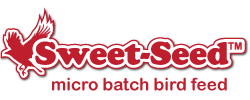Hummingbird Size Comparisons

Birders and non-birders alike know that hummingbirds are the tiniest birds in the world, but how tiny is tiny? While it is easy to look up hummingbird measurements for overall length (the ruby-throated hummingbird is 3-3.5 inches long from bill to tail), wingspan (the calliope hummingbird has a wingspan of 4.3 inches), weight (the rufous hummingbird weighs just .12 ounces), and bill length (the Anna’s hummingbird’s bill measures .31 inches), numbers can be hard to visualize. Instead, making hummingbird size comparisons to more familiar objects and sizes can help you get a bigger understanding of such little birds.
What Hummingbird Sizes Really Mean
Hummingbirds are so small that it can be difficult to truly comprehend their tininess, especially when we aren’t able to hold these birds on our hand or observe them very closely for long periods. When we compare their known measurements to more easily recognizable and understood items, however, we can begin to grasp the dimensions of a hummingbird with better accuracy.
Weight
What does a hummingbird weight? Different species weigh different amounts, and a hummingbird’s weight can fluctuate based on its age, gender, and how abundant food sources may be. Furthermore, many hummingbirds gain extra weight just before migrating to help fuel their migration, and in the late summer or early fall they can seem much bigger and heavier than they appeared in spring just a few weeks earlier. A ruby-throated hummingbird’s average weight is roughly three grams, which is the same as…
- 2-3 regular-size, standard paper clips
- 3 paper bills of U.S. currency (any denomination)
- 1 copper U.S. penny
Body Length
Birds are measured from bill to tail for their overall length. Hummingbirds are the smallest birds on the planet, and tiny bee hummingbird of Cuba is the world’s smallest bird, measuring just 2.1 inches from the tip of its bill to the end of its tail. This makes the bee hummingbird the same length as…
- The short side of a standard credit card
- A standard golf tee
Bill Length
Because hummingbirds have such extraordinary bills, their bill length is an interesting measurement to note. The sword-billed hummingbird is the only bird in the world to have a bill that is proportionally longer than its own body, and its bill measures an astonishing 3.9 inches long. This is as long as…
- A simple plastic disposable razor
- The height of a basic condensed soup can
Tail Length
Most hummingbirds have very short tails, barely noticeable when compared to body length. Some tropical hummers, however, have very showy and dramatic tail streamers during the breeding season, and use them to attract mates. The national bird of Jamaica, for example, is the red-billed streamertail, and a male’s breeding tail may be up to 7 inches long, the longest tail feathers of any hummingbird. This makes their tails as long as…
- A standard DVD case
- A new pencil that has been sharpened
Nest Diameter
Hummingbird nests are masterful creations woven from plant fluff for insulation and cushioning, bound with spider silk for strength and flexibility, and often decorated with moss and lichen for camouflage. These cup-shaped nests are typically about 1.5 inches when measured across the cup from lip to lip, which makes a hummingbird nest as wide as…
- A golf ball
- A ping-pong ball
- A large walnut
Egg Size
A female hummingbird typically lays two eggs for each nest, and it is no surprise that tiny birds lay tiny eggs. A hummingbird egg is less than .5 inches long, making it even smaller than a standard jelly bean and roughly the same size as…
- A navy bean or coffee bean
- The diameter of a AA battery
Why Hummingbird Size Matters to Birders
Ornithologists, bird banders, and other avian researchers often use measurements to help identify birds and determine different birds’ genders. For backyard birders, however, exact measurements are less necessary, but understanding just how tiny hummingbirds really are helps every birder have better grasp of hummingbirds’ true sizes. When we better realize just how small these birds are, we are better able to understand their overall delicacy and why they have such specialized needs, and the more prepared we can be to meet those needs with suitable perches, nutritious food, and safe shelters so hummingbirds will keep returning to our yards and gardens year after year.
